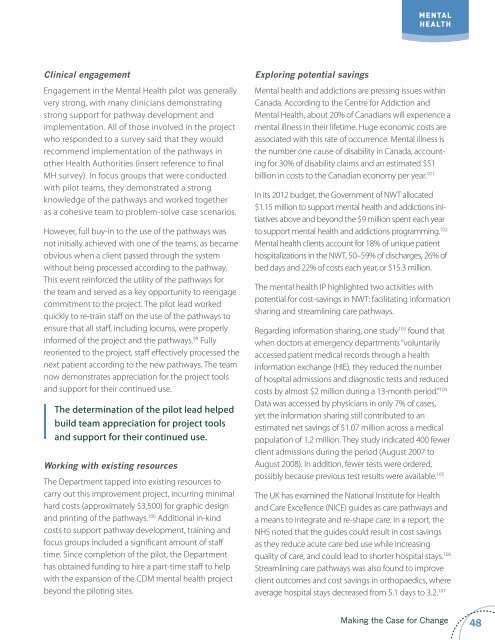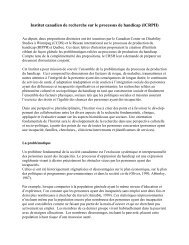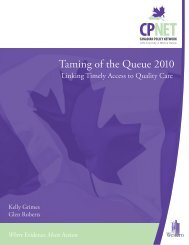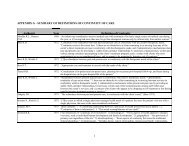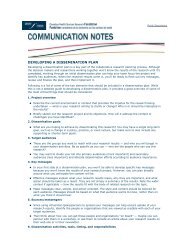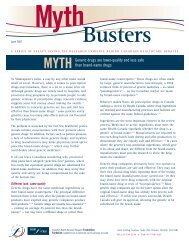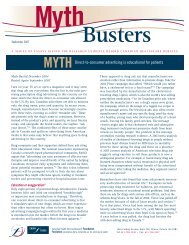Full Report
Full Report
Full Report
Create successful ePaper yourself
Turn your PDF publications into a flip-book with our unique Google optimized e-Paper software.
MENTAL<br />
HEALTH<br />
Clinical engagement<br />
Engagement in the Mental Health pilot was generally<br />
very strong, with many clinicians demonstrating<br />
strong support for pathway development and<br />
implementation. All of those involved in the project<br />
who responded to a survey said that they would<br />
recommend implementation of the pathways in<br />
other Health Authorities (insert reference to final<br />
MH survey). In focus groups that were conducted<br />
with pilot teams, they demonstrated a strong<br />
knowledge of the pathways and worked together<br />
as a cohesive team to problem-solve case scenarios.<br />
However, full buy-in to the use of the pathways was<br />
not initially achieved with one of the teams, as became<br />
obvious when a client passed through the system<br />
without being processed according to the pathway.<br />
This event reinforced the utility of the pathways for<br />
the team and served as a key opportunity to reengage<br />
commitment to the project. The pilot lead worked<br />
quickly to re-train staff on the use of the pathways to<br />
ensure that all staff, including locums, were properly<br />
informed of the project and the pathways. 99 <strong>Full</strong>y<br />
reoriented to the project, staff effectively processed the<br />
next patient according to the new pathways. The team<br />
now demonstrates appreciation for the project tools<br />
and support for their continued use.<br />
The determination of the pilot lead helped<br />
build team appreciation for project tools<br />
and support for their continued use.<br />
Working with existing resources<br />
The Department tapped into existing resources to<br />
carry out this improvement project, incurring minimal<br />
hard costs (approximately $3,500) for graphic design<br />
and printing of the pathways. 100 Additional in-kind<br />
costs to support pathway development, training and<br />
focus groups included a significant amount of staff<br />
time. Since completion of the pilot, the Department<br />
has obtained funding to hire a part-time staff to help<br />
with the expansion of the CDM mental health project<br />
beyond the piloting sites.<br />
Exploring potential savings<br />
Mental health and addictions are pressing issues within<br />
Canada. According to the Centre for Addiction and<br />
Mental Health, about 20% of Canadians will experience a<br />
mental illness in their lifetime. Huge economic costs are<br />
associated with this rate of occurrence. Mental illness is<br />
the number one cause of disability in Canada, accounting<br />
for 30% of disability claims and an estimated $51<br />
billion in costs to the Canadian economy per year. 101<br />
In its 2012 budget, the Government of NWT allocated<br />
$1.15 million to support mental health and addictions initiatives<br />
above and beyond the $9 million spent each year<br />
to support mental health and addictions programming. 102<br />
Mental health clients account for 18% of unique patient<br />
hospitalizations in the NWT, 50–59% of discharges, 26% of<br />
bed days and 22% of costs each year, or $15.3 million.<br />
The mental health IP highlighted two activities with<br />
potential for cost-savings in NWT: facilitating information<br />
sharing and streamlining care pathways.<br />
Regarding information sharing, one study 103 found that<br />
when doctors at emergency departments “voluntarily<br />
accessed patient medical records through a health<br />
information exchange (HIE), they reduced the number<br />
of hospital admissions and diagnostic tests and reduced<br />
costs by almost $2 million during a 13-month period.” 104<br />
Data was accessed by physicians in only 7% of cases,<br />
yet the information sharing still contributed to an<br />
estimated net savings of $1.07 million across a medical<br />
population of 1.2 million. They study indicated 400 fewer<br />
client admissions during the period (August 2007 to<br />
August 2008). In addition, fewer tests were ordered,<br />
possibly because previous test results were available. 105<br />
The UK has examined the National Institute for Health<br />
and Care Excellence (NICE) guides as care pathways and<br />
a means to integrate and re-shape care. In a report, the<br />
NHS noted that the guides could result in cost savings<br />
as they reduce acute care bed use while increasing<br />
quality of care, and could lead to shorter hospital stays. 106<br />
Streamlining care pathways was also found to improve<br />
client outcomes and cost savings in orthopaedics, where<br />
average hospital stays decreased from 5.1 days to 3.2. 107<br />
Making the Case for Change<br />
48


